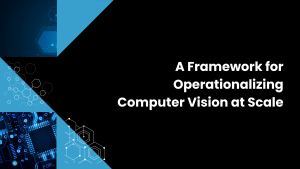Contributing Wikibon Analysts
David Floyer
Brian Gracely
Stu Miniman
Premise
Dell’s acquisition of EMC is a major move on the enterprise IT chessboard and signals what many in the Wikibon community have been stressing for years; specifically, that we’re entering a new era where massive disruptions including, mobile, cloud, social media, open source, Big Data, flash, hyperconvergence and IoT are changing the competitive landscape.
Also see: Top 10 Things You Need to Know About Dell Buying EMC
Let's shake on it… pic.twitter.com/gnXPYVpkka
— Jeremy Burton (@jburton) October 12, 2015
The Customer Angle
1. Customers we believe should have a mixed view of this deal. On the one hand, EMC will cease to exist as an independent company and relationships established over the past decades will certainly change in some way, shape or form. Moreover, a mega transaction like this will almost always involve changing the status quo and cuts in key areas are likely.
On the other hand, Dell is expert at running low margin businesses and we believe this is a necessary step for companies such as EMC to remain competitive with the pricing pressures from cloud and open source. We expect Dell to leverage its giant supply chain to keep prices down. That’s good news for customers unless it impacts service levels. We believe this underscores the imperative to accelerate the adoption of public cloud options where sensible as a hedge to transitioning service models.
2. Dell will almost certainly manage large declining EMC businesses as cash cows. This means customers should expect the following for areas including VMAX, VNX, Data Domain and perhaps others:
a. More narrow R&D focus
b. Longer product cycles
c. Increased support/maintenance costs
We advise CIOs to minimize new capacity and application growth on these platforms until more clarity is provided by the merged entity.
3. On the flip side, customers should expect Dell to place greater investment in growth areas to try and offset declines. These include:
a. Flash/XtremIO
b. ScaleIO
c. DSSD/Graphite Systems
d. ViPR
e. VMware’s NSX
f. Pivotal
g. Airwatch
The challenge is these areas are new and not well integrated today as often they stem from bespoke EMC or VMware acquisitions. Customers should understand the tradeoff between integration and best-of-breed and exercise caution with respect to investments in these areas, paying close attention to how roadmaps will be integrated and preserved in the new entity.
4. Dell has signaled that it intends to maintain the Cisco relationship as it pertains to Vblock. However, we believe Dell will drive its server content into EMC products. Expect VCE to expand its scope and widen the product portfolio. We view this as a positive for customers as it will increase choice.
5. By owning EMC and controlling VMware, Dell has in one stroke improved its strategic importance to customers. Largely viewed as a PC supplier and seller to SMBs, Dell overnight has become more important to CIOs. With the HP split, Dell is now the only true end-to-end supplier in the IT business. Does this matter? To very large buyers, yes as they will have priority access to the very best pricing and more influence on integration and roadmap direction. We advise CIOs to be proactive about initiating high-level interactions within the new entity.
6. This deal underscores the pressures that public cloud, open source and other disruptions place, not only on IT vendors but also on the enterprise customers they serve. IT organizations in our view must shed all or most non-differentiated infrastructure management and shift resources to adding value higher up the applications stack. The imperative here is to deploy everything-as-a-service and begin implementing strategies to affect hybrid and inter-cloud management.
7. The key concern with this deal relative to VMware is that despite the fact that Dell will own less of VMware than did EMC, in some ways it has lost even more of its independence. It is now beholden to more masters and has more products to optimize for VMware environments. CIOs should vocalize their concerns about VMware’s independence and exercise caution with respect to locking in long-term ELAs until more clarity is seen on the impact of this deal.
Will the client-server era go out with a bang or a whisper? #dellemc http://t.co/1HrKQEkMIQ
— Alan Cohen (@ascohen) October 12, 2015
Partner Impacts
We see three major partner ripple effects with this deal.
1. Dell re-invented the direct model for low cost hardware and is unquestionably going to expand EMC offerings for SMBs through its channels. EMC for its part has created a world-class channels ecosystem. Dell (Dell Software & Peripherals) and EMC (EMC Select – pattered after Dell S&P) have a long history of enabling complementary offerings.
Partners that simply sell boxes will continue to be squeezed on margins, the opportunity remains for those that can add value with additional services and software. We expect momentum with partners that specialize in security, data architectures and emerging IoT applications.
2. What public cloud offerings will Dell EMC offer? Dell works in multi-cloud environments (Enstratius acquisition supports large public clouds including AWS and Azure), while EMC/VMware position One Cloud with vCloud Air (and an announcement about the structure of Virtustream in EMC is expected soon).
Software partners should understand what value they can add on top of private and public cloud offerings. Specifically, we believe partners should focus on cloud enablement, new application development, systems that leverage real-time data ingestion to deliver differentiation and multi-cloud management.
3. EMC and Dell will begin to cozy up to customers – directly – and sell end-to-end solutions- from mobile to servers to consulting and integration. Partner sales teams must move fast to secure relationships with customers and get out in front of potentially aggressive moves by the new Dell. Partners should explore broadening supplier relationships with the likes of IBM, HP, Cisco, etc. and accelerate moves to add value in emerging services. We strongly believe that status quo strategies are not advisable for partners.
This point in time is a seminal moment for partners to consider their role in the marketplace. This is not expected to be the last major change in the IT vendor landscape as we near the end of the client-server era. The rate of change in the industry is generating many new technology areas with rapidly growing ecosystems including mobility, containers, IoT, and more.
Partners that can gain and share expertise and deliver services in these new areas will find many opportunities.
Action Item: While the Dell EMC transaction may be unsettling, if the deal goes down we urge customers to embrace the combination. Dell and EMC both have excellent M&A integration track records. The new Dell will become a strategic supplier and a one-stop shop for all things enterprise IT. The key action for CIOs is to gain clarity on the new Dell EMC services roadmap and understand how this affects SLAs. EMC is renowned for great customer service and it’s unclear how Dell will rationalize EMC Global Services with those of Dell (i.e. Perot). Begin investigating alternative service sources as hedge. For partners, the action is to accelerate transformations toward new business models and reduce reliance on any single vendor — control your own destiny.



